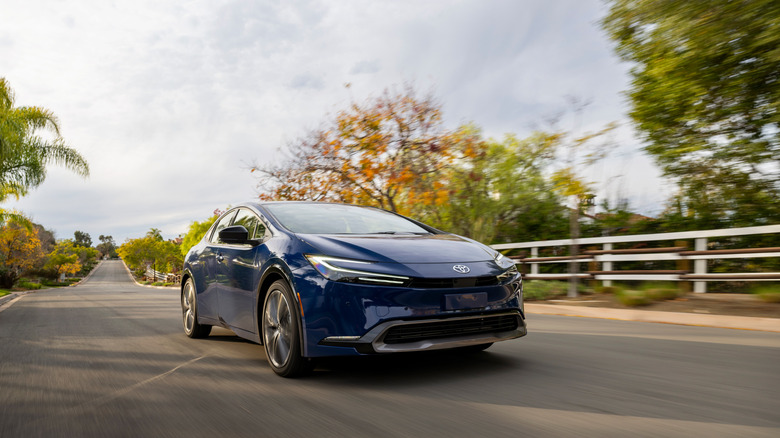Here's What The Consumer Reports Auto Tests Consist Of
When it comes to making car buying decisions, we like to get it right the first time. This is why many of us rely on reliability recommendations from trusted sources, rather than listening to what our neighbors or relatives blindly recommend. When it comes to these trusted sources, Consumer Reports are right up with the best. It's a well-known organization, and it shares a vast amount of data and advice, such as the best new cars under $25,000, and even the best car insurance provider for senior drivers.
Consumer Reports is exceptionally thorough. The Consumer Reports auto test center is a huge, 327-acre site in rural Connecticut, which plays host to a $1 million driving loop on a closed-course track. That in itself provides around six miles of paved test roads within the facility alone, perfect then, for putting anything from a Mitsubishi Mirage through to a Chevy Corvette through its paces.
In addition to having access to a plethora of closed roads, Consumer Reports also buys an awful lot of cars. Whereas many outlets borrow cars from the manufacturer, Consumer Reports buys them, subjects them to thousands of real-world miles in testing, and then reviews them based on first-hand information. In 2024 alone, the firm spent over $2 million buying cars in order to test them and provide useful feedback, something it's been doing ever since 1936.
A closer look at how Consumer Reports tests cars
Each car purchased gets driven for 2,000 miles, dubbed 'break-in' miles, before any formal testing begins. This formal testing will largely occur at Consumer Reports' own facility, which houses a 4,400-foot-long straight, a 3,500-foot handling course, an accident-avoidance course, a rock hill with 33-percent grade, and a section specifically designed to test stopping distances in both wet and dry weather.
In addition to getting behind the wheel, Consumer Reports also relies on customer-provided feedback on matters like comfort, reliability, and satisfaction. The site also plays host to 28 different electric car charging points, so electric vehicle range can be thoroughly tested after various driving tests, such as simulated highway and stop-start driving.
No stone is left unturned. Everything from car seat safety through to fit and finish quality testing is undertaken in-house by the Consumer Reports team, which is likely why they've been able to build such a solid reputation for themselves over the last 89 years. The team is at the very forefront of what it does, but ultimately, more is better. The longer Consumer Reports continue to develop, purchase, and test cars, they are more valuable the feedback given will become, especially as alternate fuels and new innovative solutions to today's motoring problems continue to develop over the coming years.

